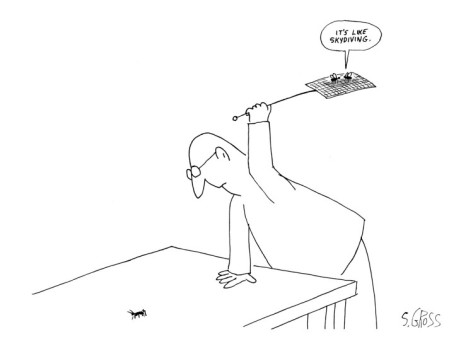« Prev Next »
 Thursday 26th July saw the launch of SciLogs.com,
a new English language science blog network. SciLogs.com, the brand-new
home for Nature Network bloggers, forms part of the SciLogs
international collection of blogs which already exist in German, Spanish and Dutch.
To celebrate this addition to the NPG science blogging family, some of
the NPG blogs are publishing posts focusing on “Beginnings”.
Thursday 26th July saw the launch of SciLogs.com,
a new English language science blog network. SciLogs.com, the brand-new
home for Nature Network bloggers, forms part of the SciLogs
international collection of blogs which already exist in German, Spanish and Dutch.
To celebrate this addition to the NPG science blogging family, some of
the NPG blogs are publishing posts focusing on “Beginnings”.
Participating in this cross-network blogging festival is nature.com’s Soapbox Science blog, Scitable’s Student Voices blog and bloggers from SciLogs.com, SciLogs.de, Scitable and Scientific American’s Blog Network. Join us as we explore the diverse interpretations of beginnings – from scientific examples such as stem cells to first time experiences such as publishing your first paper. You can also follow and contribute to the conversations on social media by using the #BeginScights hashtag.
The casual fruit fly spectator/assassin will routinely observe the following: when attempting a lethal swat - say, while mock-heroically removing days' old compost - flies appear omniscient. Swat left, fly torques right. Swat right, torque left. Left, left, right, left. It's almost telekinetic, this hand-fly coordination. Annoyance rises, fly swatter purchased, buzzing noises haunt dreams, etc, etc.
Flies seem, in an endlessly frustrating way, able to predict your movement - so attuned and sensitive to external stimuli that action is inexplicably foretold. In a sense, this is an extension of common assumptions about the nervous system: ‘Animals are usually considered to behave as complex automata, responding predictably to external stimuli'. It's how the brain works. An input-output machine, a mechanical system, a robot - generating thoughts through interaction and stimulus exchange.
Yet these are common and rather complicated assumptions, and one could argue that they're in the midst of being turned over. The trick is how to do it. Finding where thoughts ‘begin' is like testing consciousness: frustrating and complicated.
And so it's an intricate research field - (Proof: How would you devise a controlled experiment to test an invertebrate's ‘free will'?) - but still nascent and endlessly fascinating. I'm spending the next few weeks dwelling on much of the research, hoping to publish some of my explorations here.
The question I'm asking myself is: How do thoughts (or these neuronal patterns we call ‘thoughts') begin, in the most basic sense? And what does the ‘quiet' brain, freed from stimuli, look like?
One of the best experiments in the field was, unsurprisingly, conducted on fruit flies. It cleanly and cleverly captured ‘spontaneous' behaviour in an invertebrate - in other words, behaviour without a defined ‘beginning'. As described by Björn Brembs, neurobiologist at the Freie Universität Berlin and lead author of the study*:
We tethered fruit flies (Drosophila melanogaster) in completely uniform white surroundings and recorded their turning behavior. In this setup, the flies do not receive any visual cues from the environment and since they are fixed in space, their turning attempts have no effect....
Thus lacking any input, if the flies were input-output devices, their behavior should resemble random noise, similar to a radio tuned between stations. However, the analysis showed that the temporal structure of fly behavior is very different from random noise. We then tested a whole battery of increasingly complex stochastic computer models all of which failed to adequately model fly behavior.
Then, using a mathematical technique developed by ecologists, Brembs detected a non-linear signature in the fly behavior.
Such a signature can only be found in systems whose indeterminate behavior is not due to noise but originates in their design...
The flight paths of flies in a completely featureless environment were neither random nor predictable, but followed a complicated fractal pattern generated within the fly's brain.
And the necessary hand-waving point that connects biological discoveries to humans so as to satisfy our self-serving tendencies.... Drumroll...
....such variability cannot be due to simple random events but is generated spontaneously and non-randomly by the brain. If even flies show the capacity for spontaneity, can we really assume it is missing in humans?
Couldn't have said it better myself. Spontaneous excitement! Stay tuned.
++
*I would summarize it myself, but Brembs has already done so quite well - and it's his experiment - thus A) satisfying laziness and B) avoiding redundancy.
Image credit: Stan Gross






















